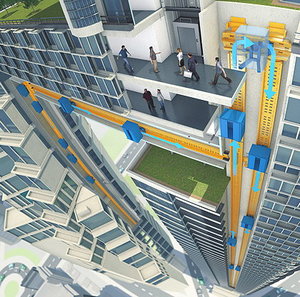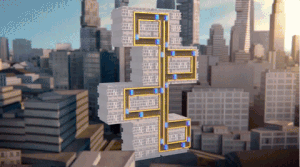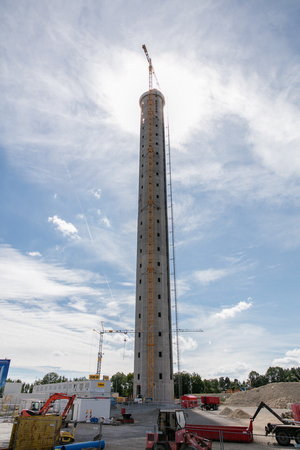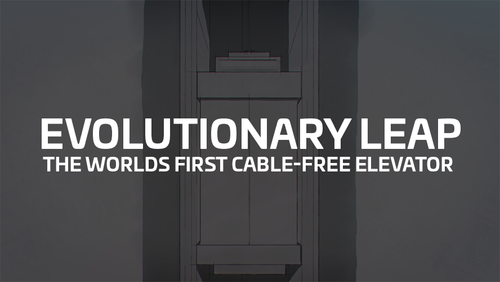
The world’s first cable-free elevator system for buildings has moved a step closer to takeoff. After performing preliminary testing with a fully functional 1:3 model in its corporate innovation center in Gijon, Spain, elevator engineering titan ThyssenKrup, based in Duisberg, Germany, plans to proceed with full-scale evaluation of prototypes closer to home at a new $43 million, 808-foot-tall test tower in Rottweil, With crews currently installing equipment, testing could begin as early as this spring, according to ThyssenKrup.

In all, three of the tower’s 12 shafts have been designated for testing of the system, known as MULTI, with the adjoining shafts exclusively designed to suit the MULTI’s specifications. “With the Rottweil test tower, we now strengthen our core business — with pioneering solutions that to allow us to redefine mobility in cities and make them great places to live,” ThyssenKrup CEO Andreas Schierenbeck said in a statement.
In this instance, “pioneering” amounts to something of an understatement. Rather than cables, cabs will be propelled by the same magnetic levitation technology used in high-speed trains. The kicker: each cab will be equipped with two magnetic linear induction motors, the same as those employed by ThyssenKrup’s levitation train, Transrapid, with one motor promoting vertical movement along rails and the other promoting horizontal movement.
The systems will allow a single shaft to accommodate multiple cabs circulating in a loop, similar to a subway station. Operating at speeds of up to 16.5 feet per second, the cabs are expected to reduce wait times to 15–30 seconds. With vertical transport no longer confined to one elevator per shaft, MULTI is expected reduce elevator footprints by as much as 50 percent, freeing up space for other revenue-generating uses to offset the premiums MULTI invariably will command.

Without the height restrictions imposed by cable hoists, the sky is literally the limit. Accordingly, ThyssenKrup notes, the system is particularly well suited for tall and super-tall structures. Due to its horizontal movement, MULTI also allows designers to break the mold of linear-oriented high-rises, allowing for zig-zagging configurations, with horizontal shafts accommodating the movement of cabs from one vertical shaft to another.
Schierenbeck has said ThyssenKrup will bring MULTI to market in 2019, initially targeting the Middle East and Asia, where mass urbanization and scarce ground space is prompting construction of super-tall buildings in China, Qatar, and the United Arab Emirates.
“WITH THE ROTTWEIL TEST TOWER, WE NOW STRENGTHEN OUR CORE BUSINESS — WITH PIONEERING SOLUTIONS THAT ALLOW US TO REDEFINE MOBILITY IN CITIES.”

ThyssenKrup also made news in September when it inked a deal to employ software giant Microsoft’s Hololens product — a pair of mixed-reality smartglasses — to assist in performing predictive maintenance worldwide. The firm is pairing Hololens with Skype, the intent being to enable 24,000 service technicians to visualize and identify problems both off- and on-site, significantly reducing service intervention times. The initiative dovetails with ThyssenKrup’s launch of MAX, purportedly a cloud-based predictive maintenance solution for the elevator industry.
“The introduction of our predictive maintenance solution, MAX, and the integration of Microsoft’s Hololens in our service processes has shown that even a conservative sector such as as the elevator industry, which has not undergone any major changes in the last 150 years, can be revolutionized through innovation and digitalization,” Schierenbeck said recently.
Watch the full video here:


Discussion
Be the first to leave a comment.
You must be a member of the BuiltWorlds community to join the discussion.